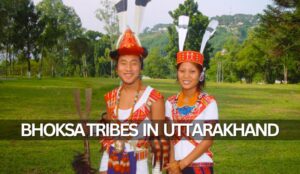Baraadsar Lake, nestled amidst the majestic Himalayas in Uttarakhand, India, is a trekker’s paradise. This high-altitude lake, located at an altitude of 4,300 meters, offers breathtaking views of snow-capped peaks, meadows bursting with wildflowers, and crystal-clear waters reflecting the azure sky.
Whether you’re a seasoned adventurer or a first-time trekker, the Baraadsar Lake trek has something for everyone. But before you embark on this journey, here’s a comprehensive travel guide to help you plan your trip:
Getting There:
- The nearest airport is Jolly Grant Airport in Dehradun, about 245 kilometers from Sankri, the starting point of the trek.
- From Dehradun, you can take a taxi or bus to Sankri.
- You can also take a train to Dehradun and then hire a taxi or jeep to Sankri.
Best Time to Visit:
- The ideal time to visit Baraadsar Lake is between April and June, or September and November.
- During these months, the weather is pleasant, the skies are clear, and the trails are snow-free.
Difficulty Level:
- The Baraadsar Lake trek is considered moderately difficult.
- The trail involves moderate ascents and descents, with an elevation gain of about 1,700 meters.
- You should be in good physical condition and have some trekking experience before attempting this trek.
Things to Do:
- Trekking: The main attraction is, of course, the trek to Baraadsar Lake itself.
- Camping: Camping under the starlit sky at the lake is an unforgettable experience.
- Fishing: You can try your luck at fishing in the lake, which is home to trout.
- Birdwatching: Keep an eye out for the diverse birdlife in the region, including eagles, kites, and Himalayan monals.
- Photography: The scenery around Baraadsar Lake is stunning, so don’t forget your camera!
What to Pack:
- Trekking shoes with good ankle support
- Warm clothes, including a down jacket
- Rain gear
- Sunscreen and sunglasses
- A hat
- A backpack
- A water bottle
- Snacks and energy bars
- A first-aid kit
- A map and compass (or a GPS device)
Permits and Regulations:
- You need to obtain a permit from the Forest Department before starting the trek.
- Camping is allowed only at designated campsites.
- Please be respectful of the environment and leave no trace behind.
Additional Tips:
- Acclimatize properly before starting the trek to avoid altitude sickness.
- Drink plenty of water and stay hydrated.
- Be prepared for unpredictable weather conditions.
- Hire a local guide if you’re a first-time trekker.
- Enjoy the stunning scenery and the serenity of the mountains!
Baraadsar Lake Trek:
The Baraadsar Lake trek is typically a 9-day itinerary, starting and ending in Sankri. Here’s a brief overview of the route:
- Day 1: Drive from Dehradun to Sankri (180 km)
- Day 2: Trek from Sankri to Guffa (2,800 m)
- Day 3: Trek from Guffa to Deoban (3,000 m)
- Day 4: Trek from Deoban to Thanger (3,600 m)
- Day 5: Trek from Thanger to Rikatik Odi (3,520 m)
- Day 6: Trek from Rikatik Odi to Devbasa (3,650 m)
- Day 7: Trek from Devbasa to Baraadsar Lake (4,300 m) via Baraadsar Ridge (4,400 m)
- Day 8: Spend the day exploring the lake and its surroundings
- Day 9: Trek back from Baraadsar Lake to Sankri
Conclusion:
The Baraadsar Lake trek is a challenging but rewarding experience that will leave you with memories that will last a lifetime. With careful planning and preparation, you can have a safe and enjoyable journey to this hidden gem of the Himalayas.
FAQs about Baraadsar Lake:
Is the Baraadsar Lake trek safe?
Generally, yes. The trek itself is considered moderately difficult, with well-defined trails and no technical climbing involved. However, it’s crucial to be aware of potential risks like altitude sickness, unpredictable weather, and remoteness. Proper preparation, acclimatization, hiring a guide (especially for first-timers), and respecting the environment are key to a safe and enjoyable trek.
Do I need prior trekking experience?
While moderate fitness and some outdoor experience are recommended, prior trekking isn’t mandatory. However, honesty about your capabilities is crucial. Be sure you can comfortably handle moderate ascents and descents with a backpack, and consider training beforehand if needed.
What permits are required?
A permit from the Forest Department is mandatory for the trek. You can typically obtain it online or in person at their office in Sankri. Make sure to book well in advance during peak season.
What facilities are available on the trek?
The trek is considered remote, so expect basic amenities. Guesthouses and homestays offer accommodation in Sankri and some campsites. On the trail, you’ll find basic shelters and designated campsites with limited facilities like toilets and water sources. Remember, “leave no trace” principles are essential.
What’s the budget for the trek?
Costs can vary depending on your travel style and preferences. Expect to budget for transportation, permits, guide fees (optional), food, accommodation, and any additional activities (like camping equipment rental). Aim for a range of ₹15,000 – ₹25,000 per person, adjusting based on your choices.






